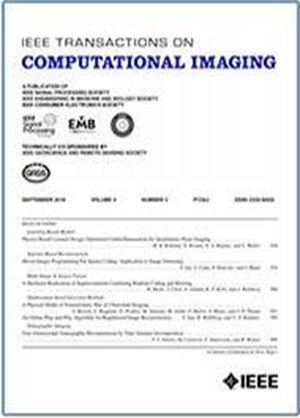Robust Cardiac Cine MRI Reconstruction With Spatiotemporal Diffusion Model
IF 4.8
2区 计算机科学
Q2 ENGINEERING, ELECTRICAL & ELECTRONIC
引用次数: 0
Abstract
Accelerated dynamic magnetic resonance imaging (MRI) is highly expected in clinical applications. However, its reconstruction remains challenging due to the inherently high dimensionality and spatiotemporal complexity. While diffusion models have demonstrated robust performance in spatial imaging, their application to spatiotemporal data has been underexplored. To address this gap, we propose a novel spatiotemporal diffusion model (STDM) specifically designed for robust dynamic MRI reconstruction. Our approach decomposes the complex 3D diffusion process into manageable sub-problems by focusing on 2D spatiotemporal images, thereby reducing dimensionality and enhancing computational efficiency. Each 2D image is treated independently, allowing for a parallel reverse diffusion process guided by data consistency to ensure measurement alignment. To further improve the image quality, we introduce a dual-directional diffusion framework (dSTDM), which simultaneously performs reverse diffusion along two orthogonal directions, effectively capturing the full 3D data distribution. Comprehensive experiments on cardiac cine MRI datasets demonstrate that our approach achieves state-of-the-art performance in highly accelerated reconstruction. Additionally, it exhibits preliminary robustness across various undersampling scenarios and unseen datasets, including patient data, non-Cartesian radial sampling, and different anatomies.基于时空扩散模型的鲁棒心脏MRI重构
加速动态磁共振成像(MRI)在临床应用中备受期待。然而,由于其固有的高维性和时空复杂性,其重建仍然具有挑战性。虽然扩散模型在空间成像中表现出强大的性能,但它们在时空数据中的应用尚未得到充分探索。为了解决这一差距,我们提出了一种专门为鲁棒动态MRI重建设计的新型时空扩散模型(STDM)。该方法通过关注二维时空图像,将复杂的三维扩散过程分解为可管理的子问题,从而降低了维数,提高了计算效率。每个2D图像都是独立处理的,允许在数据一致性指导下平行的反向扩散过程,以确保测量对齐。为了进一步提高图像质量,我们引入了一个双向扩散框架(dSTDM),它同时沿着两个正交方向进行反向扩散,有效地捕获了完整的3D数据分布。在心脏电影MRI数据集上的综合实验表明,我们的方法在高加速重建中实现了最先进的性能。此外,它在各种欠采样场景和未见数据集(包括患者数据、非笛卡尔径向采样和不同解剖结构)中表现出初步的鲁棒性。
本文章由计算机程序翻译,如有差异,请以英文原文为准。
求助全文
约1分钟内获得全文
求助全文
来源期刊

IEEE Transactions on Computational Imaging
Mathematics-Computational Mathematics
CiteScore
8.20
自引率
7.40%
发文量
59
期刊介绍:
The IEEE Transactions on Computational Imaging will publish articles where computation plays an integral role in the image formation process. Papers will cover all areas of computational imaging ranging from fundamental theoretical methods to the latest innovative computational imaging system designs. Topics of interest will include advanced algorithms and mathematical techniques, model-based data inversion, methods for image and signal recovery from sparse and incomplete data, techniques for non-traditional sensing of image data, methods for dynamic information acquisition and extraction from imaging sensors, software and hardware for efficient computation in imaging systems, and highly novel imaging system design.
 求助内容:
求助内容: 应助结果提醒方式:
应助结果提醒方式:


